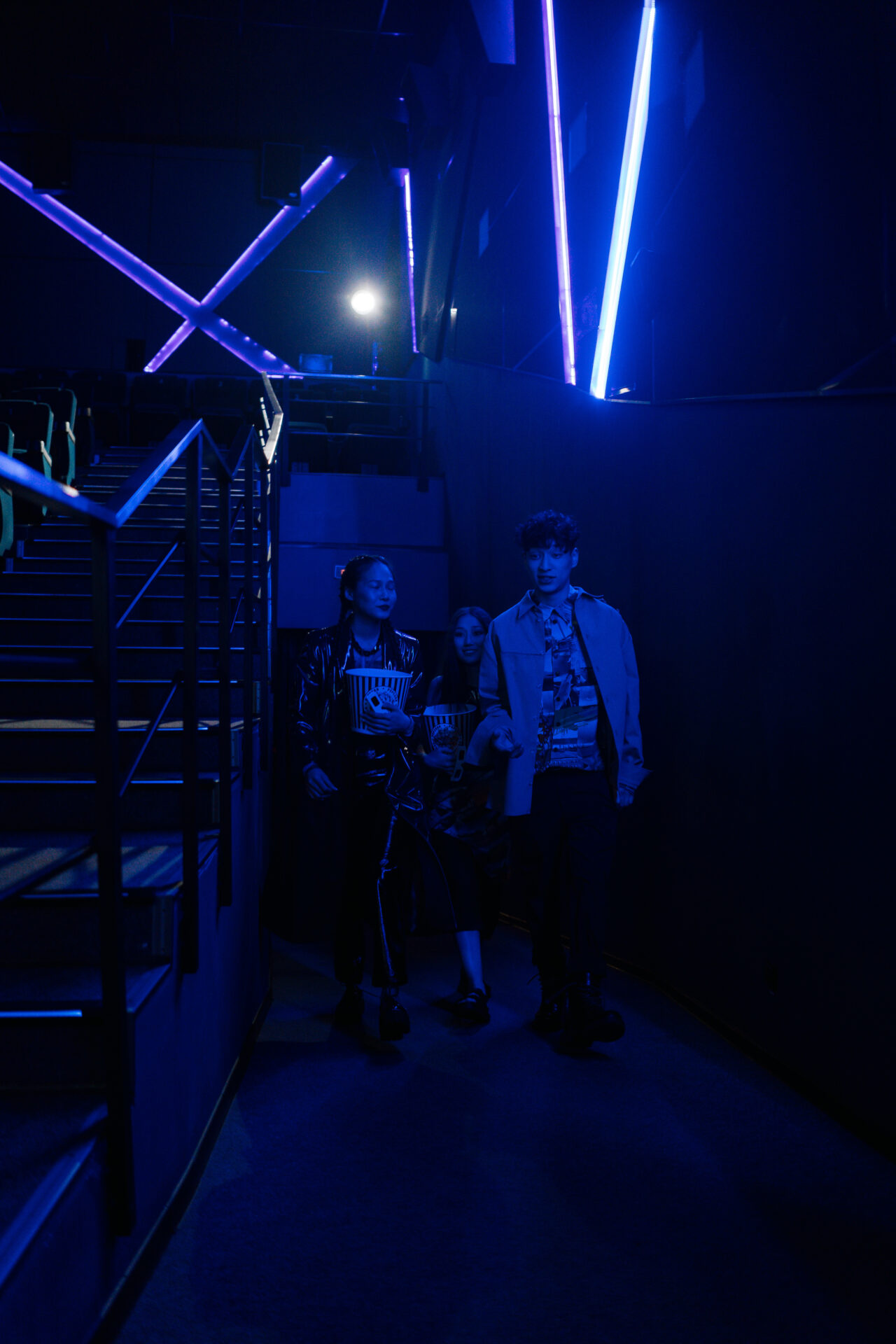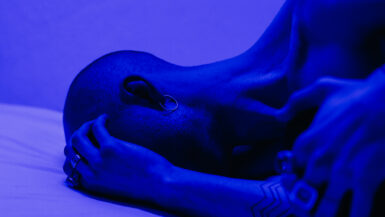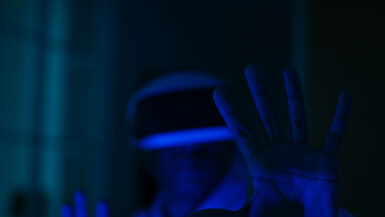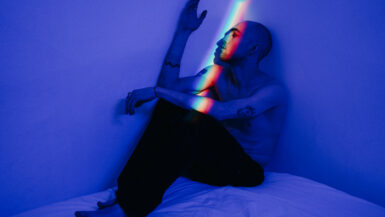In today’s ever-evolving digital era, exposure to blue light emitted by electronic devices has become an inevitable part of our lives. This prevalence raises concerns about the potential impact of blue light on our sleep and productivity. The article, “How Blue Light Exposure Affects Your Circadian Rhythm,” delves into the science behind the effects of blue light on our biological clock, particularly its influence on sleep patterns and overall productivity. By examining the latest research and expert insights, this comprehensive piece aims to provide readers with a thorough understanding of the intricate relationship between blue light and our body’s natural sleep-wake cycle, ultimately equipping them with the knowledge to make informed decisions about their screen time habits.
Tips for Reducing Blue Light Exposure Before Bedtime
As we have seen, excessive exposure to blue light from electronic devices can negatively impact our sleep patterns and overall productivity. In this section, we will provide you with practical tips to reduce blue light exposure before bedtime, enabling you to maintain a healthy sleep-wake cycle and improve your daily performance.
Establish a Digital Curfew
Setting a specific time to cease using electronic devices before bed can significantly reduce blue light exposure. Experts recommend implementing a digital curfew at least one hour before bedtime. This allows your body to naturally produce melatonin, the sleep hormone, preparing you for a restful night’s sleep.
Utilize Blue Light Filtering Applications and Settings
Many electronic devices now offer built-in settings or applications that can filter out blue light. For example, smartphones and tablets often have a “night shift” or “night mode” feature that reduces the amount of blue light emitted during evening hours. Additionally, installing blue light filtering software on your computer can assist in limiting exposure during nighttime use.
Adjust Screen Brightness
Lowering the brightness of your screens during evening hours is another effective method for reducing blue light exposure. This can be easily achieved through the settings of your electronic devices.
Invest in Blue Light Blocking Glasses
Blue light blocking glasses can filter out the harmful blue light emitted by screens. Wearing these glasses while using electronic devices in the evening can help protect your eyes and promote a healthy sleep-wake cycle.
Limit Exposure to Blue Light in Your Environment
In addition to electronic devices, blue light can also be emitted by certain types of lighting. Opt for warmer, dimmer lights in your bedroom and living spaces during evening hours to reduce overall blue light exposure.
Explore the Connection Between Blue Light and Sleep Disorders
Understanding the relationship between blue light exposure and various sleep disorders can provide valuable insight into managing such issues. For example, our article on The Role of Blue Light in Sleepwalking and Night Terrors offers a detailed analysis of this connection.
By implementing these strategies for reducing blue light exposure before bedtime, you can foster a healthier sleep-wake cycle and improve your overall productivity. With a conscious effort to minimize the impact of blue light on your life, you can achieve a more balanced and fulfilling daily routine.
Disruption of Circadian Rhythm and Sleep Quality
The exposure to blue light, particularly in the evening, can have a profound impact on our body’s natural sleep-wake cycle, also known as the circadian rhythm. In this section, we will explore how blue light exposure interferes with the circadian rhythm, leading to a decline in sleep quality and overall well-being.
The Science Behind Blue Light and Circadian Rhythm
Blue light, with a wavelength of around 480 nanometers, is a high-energy visible (HEV) light that has been shown to suppress the production of melatonin, a hormone responsible for regulating sleep. This suppression occurs because photoreceptor cells in the retina, called intrinsically photosensitive retinal ganglion cells (ipRGCs), are particularly sensitive to blue light. When these cells detect blue light, they send signals to the brain’s suprachiasmatic nucleus (SCN), the body’s master clock, which in turn reduces melatonin production and keeps us awake.
Evening Screen Time: A Recipe for Sleep Disruption
With the rapid proliferation of smartphones, tablets, and computers, many people now spend their evenings bathed in blue light from digital screens. Using these devices before bedtime can cause a significant delay in the onset of sleep, leading to difficulty falling asleep and staying asleep throughout the night. This disruption in sleep patterns can result in a decrease in sleep quality, negatively affecting our mood, cognitive functioning, and overall health.
Shift Work: Amplifying the Effects of Blue Light Exposure
Shift workers, who often work during the night and sleep during the day, are particularly vulnerable to the adverse effects of blue light exposure. The constant disruption of their circadian rhythm, combined with heightened exposure to artificial light sources, increases their risk of developing sleep disorders, mental health issues, and chronic health conditions.
Insomnia and Blue Light: A Vicious Cycle
Insomnia, a common sleep disorder characterized by difficulty falling asleep or staying asleep, can be exacerbated by excessive blue light exposure. As the sleep-wake cycle becomes increasingly disrupted, insomnia sufferers may turn to electronic devices for entertainment or relaxation, further increasing their exposure to blue light and perpetuating the cycle of sleeplessness.
Understanding the complex relationship between blue light exposure and circadian rhythm disruption is crucial for maintaining a healthy sleep-wake cycle and achieving optimal sleep quality. By being mindful of our screen time habits and implementing strategies to reduce blue light exposure, we can take a proactive approach to safeguarding our sleep and overall well-being.
Blue Light’s Influence on Melatonin Production
The impact of blue light on our body’s natural sleep-wake cycle cannot be overstated, with melatonin production playing a critical role in this process. Delving into the intricate relationship between blue light exposure and melatonin levels, this subsection will explore how this essential hormone is affected, ultimately influencing our ability to achieve restful and restorative sleep.
Understanding the Sleep Hormone: Melatonin
Melatonin is a hormone produced by the pineal gland, a small endocrine gland located in the brain. It plays a vital role in regulating the sleep-wake cycle, with its production increasing during the evening and peaking at night, signaling the body to prepare for sleep. The synthesis and release of melatonin are influenced by light exposure, with darkness promoting its production and bright light suppressing it.
Blue Light: The Melatonin Suppressor
Of all the colors in the light spectrum, blue light has been found to be the most effective at suppressing melatonin production. Exposure to blue light, particularly in the evening hours, can trick our body into believing it is still daytime, resulting in a significant decrease in melatonin levels. This hormonal imbalance can make it difficult to fall asleep and stay asleep throughout the night.
The Consequences of Disrupted Melatonin Production
The suppression of melatonin production due to excessive blue light exposure can lead to a range of sleep-related issues, including difficulty falling asleep, frequent nighttime awakenings, and overall diminished sleep quality. Beyond its impact on sleep, disrupted melatonin levels have also been linked to various health concerns, such as reduced immune function, mood disorders, and an increased risk of chronic diseases like obesity and type 2 diabetes.
Strategies for Protecting Melatonin Production
By adopting a proactive approach to managing blue light exposure, it is possible to safeguard melatonin production and promote a healthy sleep-wake cycle. Some practical strategies include implementing a digital curfew, using blue light filtering applications, and creating a sleep-friendly environment by minimizing exposure to blue light in the evening.
Recognizing the significant influence blue light has on melatonin production is key to understanding its impact on our circadian rhythm. By taking steps to mitigate this exposure, we can ensure the optimal functioning of our body’s natural sleep-wake cycle, paving the way for improved sleep quality and overall well-being.
Link Between Blue Light Exposure and Productivity
The impact of blue light on our sleep patterns has already been established, but it is also important to consider how this exposure can affect our daily productivity levels. This subsection will explore the connection between blue light exposure and productivity, shedding light on the ways in which our screen time habits can influence our ability to perform tasks efficiently and effectively.
The Sleep-Productivity Connection
Sleep plays a critical role in maintaining optimal cognitive functioning, which directly influences our productivity. A lack of quality sleep can lead to reduced concentration, impaired memory, and decreased problem-solving abilities, ultimately hindering our ability to perform tasks at our best. Given the detrimental effects of blue light exposure on sleep quality, it is evident that there is a strong connection between excessive screen time and decreased productivity.
How Blue Light Exposure Affects Work Performance
Excessive exposure to blue light, particularly during evening hours, can disrupt our sleep-wake cycle and result in poor sleep quality. This sleep deprivation can negatively impact our cognitive functioning, leading to a decline in work performance. For example, individuals who are sleep deprived are more likely to make errors, struggle with decision-making, and experience reduced creativity, all of which can hinder productivity in both personal and professional settings.
Managing Blue Light Exposure for Enhanced Productivity
Understanding the link between blue light exposure and productivity allows us to take proactive measures in mitigating its adverse effects. By implementing strategies to reduce blue light exposure, such as setting a digital curfew, using blue light filtering applications, and creating a sleep-friendly environment, we can improve our sleep quality and, in turn, enhance our daily productivity levels.
The Role of Breaks and Screen Time Management
In addition to reducing blue light exposure during evening hours, it is crucial to manage our screen time throughout the day to prevent the negative impacts on productivity. Taking regular breaks from screens, even for brief periods, can help maintain focus and reduce eye strain. Moreover, consciously allocating specific times for screen-based activities and setting boundaries on device usage can contribute to a more balanced and productive daily routine.
Recognizing the connection between blue light exposure and productivity empowers us to make informed decisions about our screen time habits. By taking steps to manage our exposure to blue light and adopting a proactive approach to screen time management, we can ensure that our sleep quality and daily productivity are preserved, ultimately leading to a more balanced and fulfilling life.
Understanding Blue Light and Its Sources
As we delve deeper into the topic of blue light exposure and its effects on our circadian rhythm, it is essential to first understand what blue light is and where it comes from. In this subsection, we will explore the nature of blue light, highlighting the various sources that contribute to our daily exposure, and discuss the importance of being aware of these sources to effectively manage our interaction with this high-energy visible light.
The Science Behind Blue Light
Blue light is a part of the visible light spectrum, characterized by its short wavelength and high energy. With a wavelength range of approximately 380 to 500 nanometers, blue light sits on the higher end of the energy scale, making it more likely to cause disruptions in our body’s natural processes, such as our sleep-wake cycle. Blue light is particularly effective at impacting our circadian rhythm due to its influence on the specialized photoreceptor cells in our retinas, as mentioned earlier in the article.
From the Sun to Digital Screens: Common Sources of Blue Light
The primary source of blue light is the sun, which emits a wide spectrum of light, including ultraviolet (UV) rays and visible light. Exposure to natural blue light during daylight hours is crucial for maintaining our circadian rhythm and promoting alertness and cognitive functioning. However, excessive exposure to artificial sources of blue light can have detrimental effects on our sleep patterns and overall well-being.
In today’s digital age, electronic devices such as smartphones, tablets, computers, and televisions have become significant sources of blue light exposure. The prolonged use of these devices, especially during evening hours, can disrupt our body’s natural sleep-wake cycle and contribute to sleep disorders and other health issues.
Additionally, energy-efficient lighting options, such as LED bulbs and compact fluorescent lamps (CFLs), also emit blue light. While these lighting options have environmental and economic benefits, their usage in the evening can contribute to increased blue light exposure, further impacting our circadian rhythm.
Being Mindful of Blue Light Exposure
To effectively manage the potential negative impacts of blue light on our sleep-wake cycle, it is essential to be aware of the various sources that contribute to our daily exposure. By understanding the link between blue light and our circadian rhythm, we can take proactive measures to minimize exposure from artificial sources, particularly during the evening hours.
Some practical strategies include setting a digital curfew, using blue light filtering applications on electronic devices, and opting for warmer, dimmer lighting options in the evening. By being mindful of our blue light exposure and adopting a balanced approach to our interaction with screens and artificial lighting, we can promote a healthier sleep-wake cycle and enhance our overall well-being.





Leave a reply